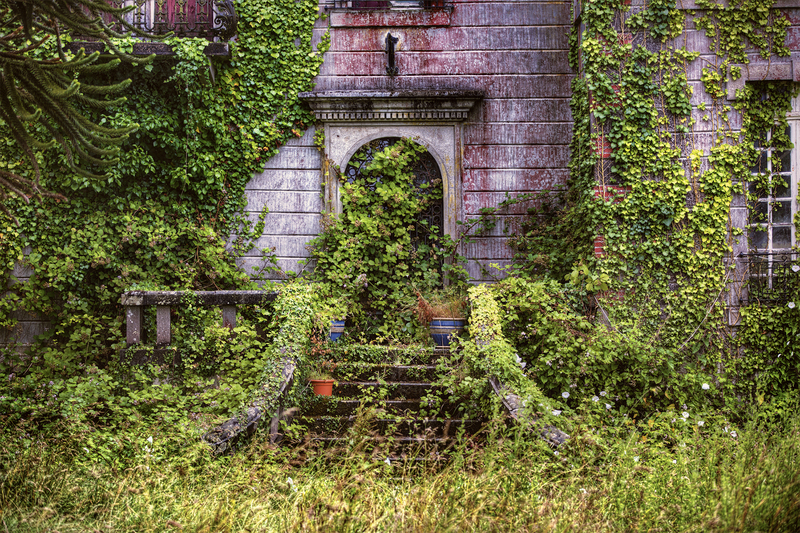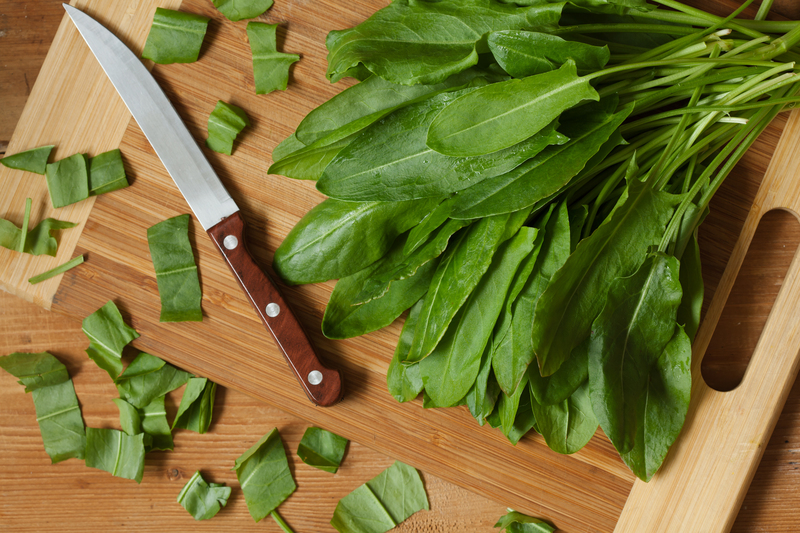Brighten Your Borders With Tropical Plants Suited for the British Isles
Are you dreaming of a lush, exotic retreat in your backyard? Tropical plants have captivated gardeners worldwide with their bold foliage and vivid blooms. While the British Isles are not naturally tropical, many visually striking and exotic-looking plants thrive surprisingly well in UK gardens, even with our cooler, wetter climate. This comprehensive guide will show you how to brighten your borders with tropical plants specifically suited to the British Isles, providing practical tips, plant recommendations, and creative design ideas for a truly vibrant outdoor oasis.
Why Choose Tropical Plants for UK Borders?
Tropical-style gardening brings energy, drama, and a touch of escapism to your landscape. The oversized leaves, eye-catching colors, and unique textures of tropical plants inject a sense of adventure and luxury. But there are more reasons to consider going tropical:
- All-season interest: Many tropical plants offer spectacular foliage even when not in bloom.
- Low maintenance: Once established, many hardy "tropicals" are surprisingly easy and resilient.
- Wildlife friendly: Bold blooms attract pollinators such as bees and butterflies.
- Versatility: Suitable for borders, containers, patios, and even small city gardens.
- Climate change adaptability: The UK's warming climate allows for an even broader range of tropical choices every year.

Understanding Hardy and Half-Hardy Tropicals
A concern for British gardeners is whether tropical-looking plants can survive our winters. It's essential to differentiate between hardy and half-hardy tropical plants:
- Hardy tropical plants can withstand the UK's winter temperatures outdoors with minimal to no protection.
- Half-hardy tropical plants require some winter protection, such as mulching, fleece, or moving to sheltered locations (such as greenhouses or indoors).
By combining both groups, you can achieve a tropical impact while ensuring year-round structure and interest in your borders.
Tropical Plants Best Suited for the British Isles
Below are some of the most reliable and dazzling tropical-style plants suitable for the British Isles. From robust architectural statement-makers to quick-growing annuals, these plants will transform any dull border into an eye-catching paradise.
1. Trachycarpus fortunei (Windmill Palm)
Hardiness: Down to -15?C
The Windmill Palm is arguably the most reliable palm for the UK climate. Its bold, fan-shaped fronds instantly inject a tropical feel and can withstand snow, frost, and coastal conditions. Position as a central feature or as a backdrop in borders for architectural drama.
2. Fatsia japonica (Japanese Aralia)
Hardiness: Down to -10?C
With huge, glossy, hand-shaped leaves, this evergreen is an all-year-round star. Fatsia japonica tolerates shade, making it ideal for North-facing borders or underplanting beneath taller specimens. Its unique foliage perfectly complements smaller, colorful tropicals.
3. Tetrapanax papyrifer 'Rex' (Rice Paper Plant)
Hardiness: Down to -7?C (with mulch)
The extraordinary, umbrella-like leaves of Tetrapanax lend a truly bold, exotic character to borders. Give it space--leaves can reach up to a meter across! It thrives in sheltered, sunny to part-shade locations and creates instant jungle vibes.
4. Bananas (Musa basjoo & Ensete ventricosum 'Maurelii')
- Musa basjoo: Surprisingly hardy and can be left outside with protection in winter. Large, paddle-shaped leaves echo tropical rainforests.
- Ensete ventricosum 'Maurelii': Not fully hardy, but grown as an annual or overwintered indoors for its crimson-tinged dramatic leaves.
Bananas are border showstoppers and provide that lush, vibrant texture associated with tropical environments.
5. Cannas
Cannas provide both dramatic leaves and brilliant summer flowers in shades of red, orange, yellow, and pink. Although the rhizomes require lifting or mulching in colder regions, the stunning effect is worth the effort.
6. Dicksonia antarctica (Tasmanian Tree Fern)
A true prehistoric beauty, this ancient fern adds vertical accent and thrives in damp, partially shaded spots. The furry "trunk" supports a crown of arching fronds--ideal for woodland-style tropical borders. Protect the growing crown in harsh winters, especially in Northern areas.
7. Hardy Gingers (Hedychium species)
Why Choose Hardy Gingers?
- Large, aromatic foliage
- Beautiful, scented late-summer blooms
- Hardy forms can return year after year
- Hedychium densiflorum - Long-lasting orange-red flowers, strong scent
- Hedychium 'Tara' - Towering stalks and striking flower clusters
8. Colocasia and Alocasia (Elephant Ears)
Colocasia and Alocasia are famous for their gigantic, heart-shaped leaves, which instantly give borders a tropical edge. In milder regions, hardy varieties such as Colocasia 'Pink China' can be left in the ground--otherwise, grow in pots for easy protection.
9. Yucca
Upright, sword-like leaves and creamy-white flower spikes mark these drought-tolerant exotics. Although native to arid climates, Yuccas are incredibly tough and adapt well to the British Isles, particularly seaside gardens.
10. Melianthus major (Honey Bush)
With deeply cut, silvery-blue leaves, the Honey Bush offers architectural interest and a distinctive exotic aroma when touched. It produces unique, burgundy flower spikes in summer and thrives in sunny locations with shelter from harsh winds.
How to Create a Tropical-Style Border in the British Isles
Brightening your borders with tropical plants requires careful plant selection, imaginative design, and an understanding of microclimates. Follow these tips to maximize the tropical look in your garden:
1. Assess Your Site
- Note prevailing winter winds and shelter from fences, walls or evergreen hedges.
- South or west-facing borders usually get more sun, supporting a wider range of exotics.
- Check soil drainage--many tropicals dislike boggy conditions in winter.
2. Layer for Maximum Impact
- Back: Tall specimens like Trachycarpus, Musa, Tetrapanax, or Dicksonia create height.
- Middle: Place lush foliage plants (Fatsia, Cannas, Gingers), adding pops of colorful blooms.
- Front: Use low-growing exotics--Heuchera, Ligularia, or colorful annuals like Coleus--for a polished finish.
3. Combine Contrasting Forms and Colors
Mix bold, broad leaves with spiky shapes and add vibrant color. Use reds, oranges, and yellows for warmth, and intersperse with purple, blue, or silver for depth.
4. Incorporate Movement
Grasses such as Miscanthus and Cortaderia (pampas) echo the look of sugar cane or bamboo and sway gracefully in the breeze, lending atmosphere to your tropical border.
5. Choose Hardy "Look-alikes" for Easy Care
- Hostas - Their lush leaves substitute for exotic foliage in shadier spots.
- Crocosmia - Sword-like foliage and fiery blooms mimic the look of subtropical plants.
- Persicaria - For dramatic groundcover and color variation.
- Phormium - For sleek, architectural spikes in a wide range of colors.
Protection and Maintenance of Tropical Borders in the UK
To ensure your exotic plants thrive year after year, keep these essential care points in mind:
- Mulch generously in autumn to insulate roots of borderline-hardy plants.
- Wrap trunks and crowns with horticultural fleece or straw where necessary.
- Lift and store tender bulbs and rhizomes (e.g., Cannas, Dahlias, Gingers) after the first frost.
- Water regularly during dry summer periods, as lush tropicals need moisture to maintain their vigor.
- Feed generously with liquid fertilizer during the growing season to support robust foliage and flowers.
Brighten Shaded Borders With Shade-Tolerant Tropicals
Not all British gardens offer sun-drenched borders, but you can still cultivate lush, tropical effects in partial or full shade:
- Fatsia japonica
- Ferns (Dryopteris, Polystichum, Asplenium)
- Hostas
- Impatiens (Busy Lizzies)
- Heuchera
- Arisaema
Combine lime-green, silver, and purple foliage with bold textures for an understory jungle effect.
Year-Round Color: Annuals and Summer Fillers
While hardy tropical plants form the backbone, annuals and tender exotics supply an extra burst of color and texture during the warmer months. Try these as gap-fillers or potted accents:
- Begonia - Glistening leaves and non-stop blooms
- Salvia - Vivid spires, bee-friendly
- Coleus - Iridescent foliage in a rainbow of colors
- Ipomoea (Sweet potato vine) - Fast-growing trailing leaves
- Amaranthus - Dramatic plumes and "love lies bleeding" tails
- Cosmos - Airy, daisy-like flowers on fine, feathery foliage
Design Inspiration: Show-Stopping Border Combinations
Need some creative ideas? Here are a few tropical border combinations suited to the British Isles:
1. Jungle Oasis
- Trachycarpus fortunei (Windmill palm)
- Colocasia 'Pink China'
- Canna 'Wyoming'
- Heuchera 'Obsidian'
- Crocosmia 'Lucifer'
2. Sun-Drenched Retreat
- Yucca filamentosa
- Ensete ventricosum 'Maurelii' (in large pots)
- Salvia 'Hot Lips'
- Gazania (in containers)
- Verbena bonariensis
3. Shady Jungle Corner
- Fatsia japonica
- Dicksonia antarctica
- Polystichum setiferum (Soft shield fern)
- Hosta 'Sum and Substance'
- Tiarella cordifolia

Frequently Asked Questions
- Can I grow tropical plants in pots? Yes! Many exotic species, such as bananas, cannas, and elephant ears, thrive in containers for easy winter protection. Group pots together for a bold display and move indoors or into a greenhouse as needed.
- Are tropical plants high maintenance? Not necessarily. If you choose hardy and climate-appropriate species, they can be surprisingly easy. Annual maintenance typically involves winter protection and extra feeding during the growing season.
- Which tropical plants flower in the UK? Many cannas, gingers (Hedychium), dahlias, and salvias provide dramatic, long-lasting blooms through summer and autumn.
- How do I protect my tropical border in cold winters? Mulch thickly, wrap tender crowns, and move pots under cover. Focus on proven hardy varieties if your area is prone to deep frost.
Conclusion: Create Your Own Tropical Paradise
In summary, brightening your borders with tropical plants suited to the British Isles is entirely achievable. With a blend of robust palms, verdant foliage, and dazzling blooms, you can craft a garden that transports you to far-flung rainforests--all from your own back door. Choose carefully, design with courage, and look forward to years of lush, exotic color even in the unpredictable UK climate.
Explore nurseries, experiment with combinations, and don't be afraid to be bold. The joy of a tropical-style border is that anything goes--fuss-free exotics just waiting to be discovered!